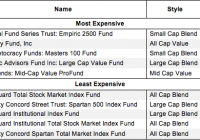Tortoise Capital Advisors Debuts In The U.S. With North American Pipeline ETF
Master limited partnerships (MLPs) which had put up a great show last year despite plunging oil prices saw a weak start to the year. MLPs finally had to give in to the oil price massacre. However, the weakness in the space gave many an entry point in these products, given their high level of yield. This popularity is probably attracting new issuers to come up with products focusing on this space. Most recently, Tortoise Capital Advisors has made a debut in the U.S. ETF market with a brand new product. The Tortoise North American Pipeline Fund (NYSEARCA: TPYP ) and charges 0.7% as fees. TPYP The passively managed product seeks to provide exposure to the broad North American energy pipeline sector by tracking the performance of the Tortoise North American Pipeline Index. This float-adjusted, cap-weighted index includes pipeline companies structured as corporations, limited liability companies and master limited partnerships (MLPs). The index uses proprietary, research-driven and rules-based methodologies to select its constituents. TPYP currently holds a basket of 102 stocks, with Williams Cos Inc. (NYSE: WMB ) as the top holding with 9.2% exposure, followed by Enbridge Inc (NYSE: ENB ) and Kinder Morgan Inc. (NYSE: KMI ) with 7.8% and 7.5% allocation, respectively. How Does it Fit in The Portfolio? MLPs represent an attractive investment option for income-focused investors in the current environment. In addition to high yields (~4% to 6% currently), MLPs have relatively stable cash flows and solid growth potential. Further, research suggests that there is no material correlation between interest rates and the performance of the MLPs. Moreover, energy production boom in the U.S. remains the long-term growth driver for these MLPs. Further, MLPs have low correlations with many other asset classes including equities and commodities and thus add diversification benefits to a portfolio. “We created this fund based on what we perceived as a need in the market for an ETF that not only provides access to the full universe of North American pipeline companies, but does so in a way that more fully captures the total return potential of these assets” said Jeremy Goff, Vice President at Tortoise. Investors in TPYP will not be subject to K-1 tax forms. Can TPYP Succeed? There are already quite a number of funds targeting the MLP space with the ALPS Alerian MLP ETF (NYSEARCA: AMLP ) the most popular product with an asset base of $8.4 billion and an average trading volume of more than $4.4 million shares. The fund has a dividend yield of 7.45% and is down 7% this year. Though AMLP’s expense ratio before deferred taxes is 0.85%, the gross expense ratio is currently extremely high at 8.56%. The J PMorgan Alerian MLP Index ETN (NYSEARCA: AMJ ) and the UBS ETRACS Alerian MLP Infrastructure Index ETN (NYSEARCA: MLPI ) take the next two spots with an AUM base of $4.9 billion and $2.4 billion, respectively. Both AMJ and MLPI charge 85 basis points as fees and offer an attractive yield of 5.88% and 5.33%, respectively. Thus competition is tough in the MLP space. However, if the newly launched fund “captures the total return potential of these assets” and generates better returns than the existing ones, it might see some success.
